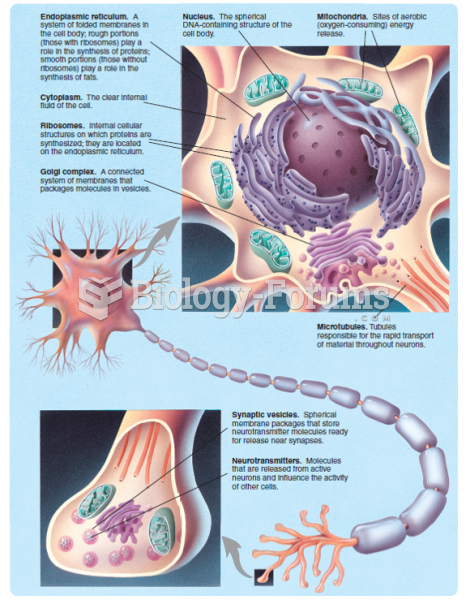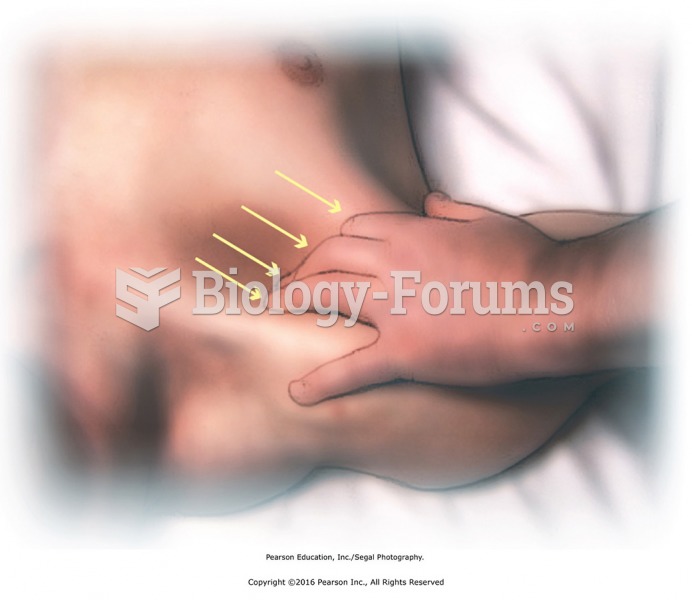|
|
|
The toxic levels for lithium carbonate are close to the therapeutic levels. Signs of toxicity include fine hand tremor, polyuria, mild thirst, nausea, general discomfort, diarrhea, vomiting, drowsiness, muscular weakness, lack of coordination, ataxia, giddiness, tinnitus, and blurred vision.
As many as 20% of Americans have been infected by the fungus known as Histoplasmosis. While most people are asymptomatic or only have slight symptoms, infection can progress to a rapid and potentially fatal superinfection.
Green tea is able to stop the scent of garlic or onion from causing bad breath.
Cytomegalovirus affects nearly the same amount of newborns every year as Down syndrome.
Eat fiber! A diet high in fiber can help lower cholesterol levels by as much as 10%.







